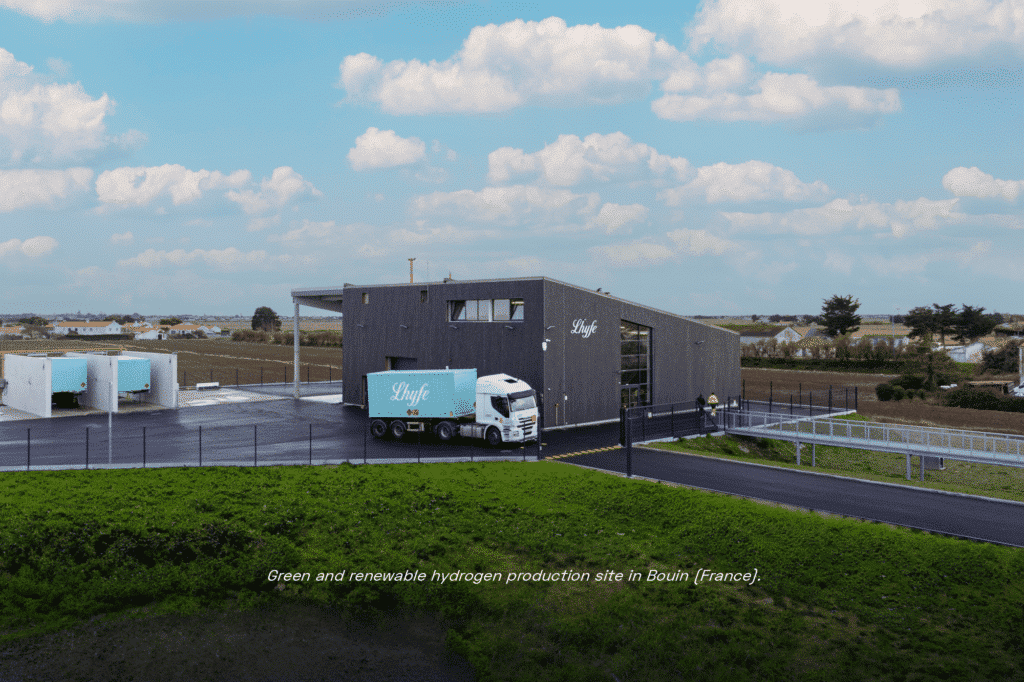Published the 21/06/2024

At Lhyfe, we are committed to revolutionizing the energy sector with our innovative approach to green hydrogen production. Recently, our Head of Central and Eastern Europe, Luc Graré, sat down with World Hydrogen Leaders to discuss our strategies, ongoing projects, and vision for the future.
This interview provides valuable insights into our long-term approach, the unique challenges we face, and the exciting opportunities that lie ahead. Here’s a summary of the key points from their conversation.
A Long-Term Vision for Green Hydrogen: An Overview of Lhyfe’s approach and existing operational reserve
Luc Graré:
We are a producer and supplier of green renewable hydrogen, and we invest in hydrogen production facilities. Our focus is on making green hydrogen through electrolysis and renewable energy. Unlike pure developers who build plants to sell them after they have been constructed, we keep these plants for the long term, which gives us a different perspective. We take a long-term view and consider how the market for green hydrogen will evolve over the next 10 or 20 years.
There is a significant opportunity in the industry segment as they are looking to replace grey hydrogen with green hydrogen. We also focus on mobility. Major truck manufacturers have announced plans for hydrogen-driven trucks and buses from 2026 and 2027.
The data we have on market evolution influences our risk assessment and forecasts for the future. We believe it is necessary to start small, learn, and then scale up gradually to de-risk the project before moving on to larger plants. Starting small allows us to gain valuable experience and knowledge that we can apply to larger projects in the future.
Current Projects and Capabilities
Our first green hydrogen production plant in France became operational in September 2020. It is the first of its kind in the country and is still the only one producing green hydrogen three years later.
Currently, we are building six sites: three in France, each with a capacity of 5 MW. In Germany, there is a 10 MW plant in Schwäbisch Gmünd, a 1 MW plant in Tübingen, and another 10 MW plant in Brake, located in the north of Germany.
Advancing Offshore Hydrogen Production
Luc Graré:
We conducted a project in the Atlantic Ocean “SeaLhyfe” near France, 26 kilometres from the coast by Le Croisic, north of Saint-Nazaire, on a floating platform. We installed a 1 MW electrolyzer to produce hydrogen. This electrolyzer was directly connected to a floating wind turbine, making it one of the first floating offshore green hydrogen production in a test mode in France.
The purpose of this project was to understand the impact of the seawater environment on the equipment, learn about maintenance, and minimize the need for maintenance work in remote sea locations.
Future Prospects: Scaling Up for a Sustainable Tomorrow
Luc Graré:
Offshore operations and hydrogen production are crucial for our company. After our 1 MW offshore project in France, we are planning a 10 MW project in Belgium as part of the HOPE project. We envision large-scale offshore green hydrogen production facilities in the future due to the increasing offshore wind capacity.
Germany currently has 8 GW of offshore wind capacity, with plans to add another 60 GW. However, there have been challenges in transmitting this electricity to the mainland. The proposed hydrogen backbone in Germany, utilizing existing natural gas pipelines, could potentially transport the equivalent of 20 GW of electrolysis capacity from the north to the south. This solution would allow for the efficient transfer of offshore wind energy to green hydrogen production, paving the way for widespread use of hydrogen technology.
Discover the full interview with Luc Graré for World Hydrogen Leaders below.

